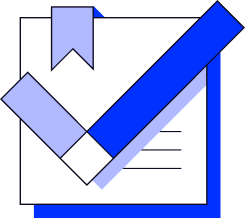
Effizienzsteigerung
Durch Process Mining werden Engpässe aufgedeckt, Workflows optimiert und die Prozesseffizienz verbessert.

Process Mining ist eine moderne analytische Technologie, die Geschäftsprozesse anhand von Ereignisprotokollen analysiert und Einblicke in ihren operativen Ablauf liefert. Es ist eine Schnittstelle zwischen Datenwissenschaft und Prozessmanagement und untersucht Ereignisprotokolle, um reale Prozesse zu entdecken, zu überwachen und zu verbessern. Ein Beispiel für die Anwendung von Process Mining ist das Supply Chain Management, wo es den gesamten Lebenszyklus eines Produkts von der Herstellung bis zur Lieferung analysieren kann. Dabei werden Engpässe aufgedeckt, Prozessabweichungen identifiziert und Einblicke in die Gesamtfunktion einer Lieferkette ermöglicht.
Process Mining bietet erhebliche Vorteile und verändert die Art und Weise, wie Unternehmen ihre Abläufe verstehen und optimieren.


Durch Process Mining werden Engpässe aufgedeckt, Workflows optimiert und die Prozesseffizienz verbessert.

Mit Process Mining können unnötig teure Tätigkeiten identifiziert und Kosten reduziert werden.

Process Mining überwacht Prozesse und stellt sicher, dass regulatorische Standards eingehalten werden.

Process Mining gibt klare Einblicke in die Prozesse und fördert so deren Transparenz.

Mit Process Mining können Prozessleistungen über einen längeren Zeitraum verfolgt werden, um kontinuierliche Verbesserungen zu erreichen.

Process Mining ermöglicht eine frühzeitige Erkennung von Prozessabweichungen und zeigt Risiken im Betriebsablauf auf.












Process Mining sorgt heute in zahlreichen Branchen für Aufsehen, da es die Effizienz vieler Abläufe steigert. In der Immobilienverwaltung ermöglicht es bessere Services, indem es den gesamten Zyklus von Miet- oder Leasingprozessen nachhält. In der Steuerverwaltung wird Process Mining genutzt, um Steuererklärungs- und -prüfungsprozesse zu analysieren. Dadurch können Engpässe erkannt und die Einhaltung von Vorschriften sichergestellt werden. Im Hotel- und Gaststättengewerbe dient es der Verbesserung des Kundenerlebnisses, indem Prozesse wie Reservierung, Einchecken und Housekeeping optimiert werden. Auch in Branchen wie dem Gesundheitswesen, der Fertigung und der Logistik wird Process Mining weit verbreitet eingesetzt. Im Gesundheitswesen hilft es bei der Abbildung der Patientenreise, in der Fertigung bei der Optimierung von Produktionsprozessen und in der Logistik bei der Verbesserung des Lieferkettenmanagements.
















Robotic Process Automation (RPA) greatly benefits from advancements in Artificial Intelligence (AI). While RPA is excellent at following rules-based processes, AI provides the capability for RPA bots to learn, adapt, and make decisions, enhancing their functionality. AI-powered cognitive capabilities like Natural Language Processing (NLP), Machine Learning (ML), and Computer Vision enable bots to understand and respond to text or voice commands, learn from historical data, and recognize images, respectively. For instance, in customer service, AI-powered RPA can analyze customer sentiments in real-time, allowing bots to handle customer complaints and queries more effectively, delivering personalized responses and improving overall customer experience.
